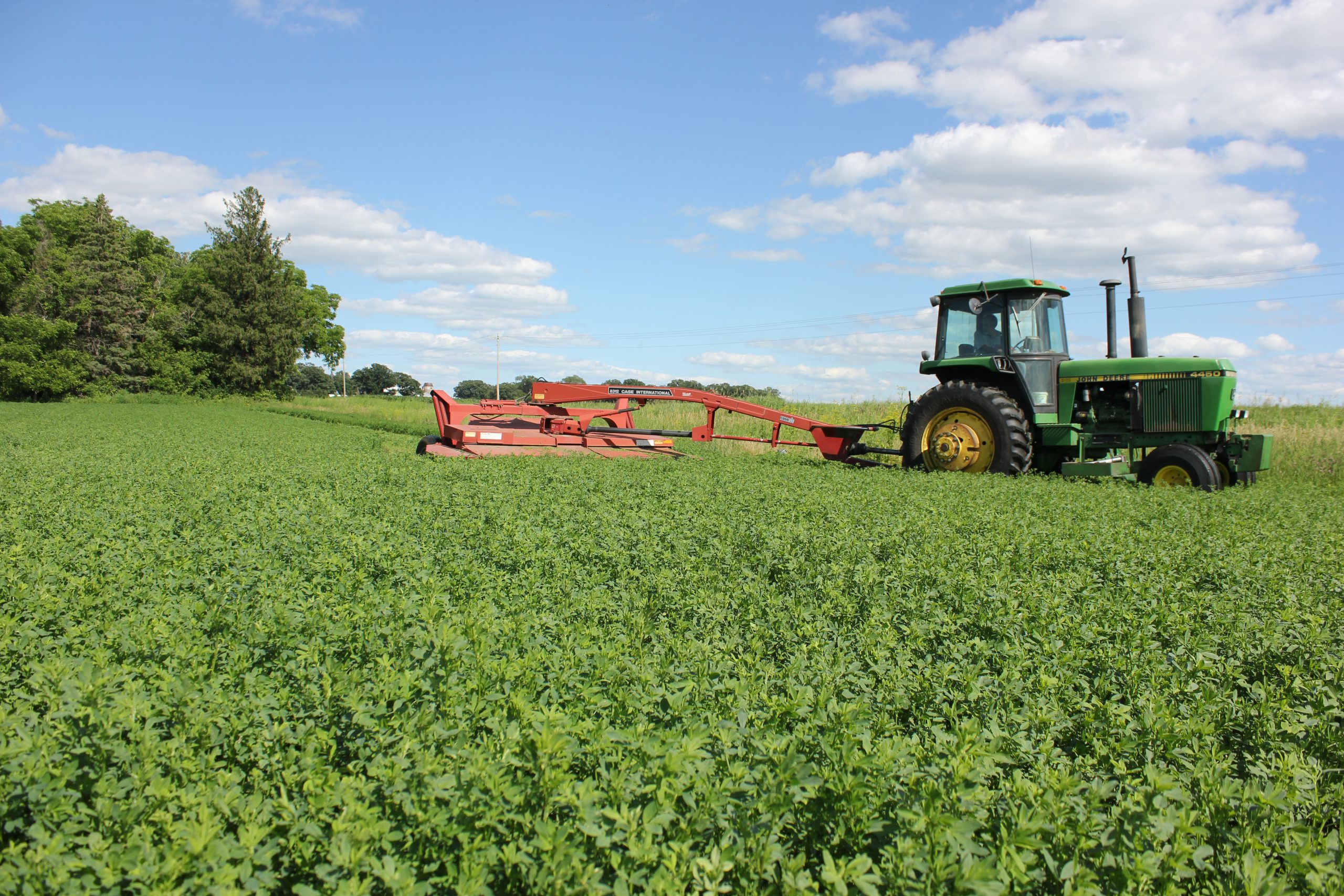Margaret Smith, PhD Forage Agronomist, Albert Lea Seed
At the beginning of October in the Upper Midwest, we’re in the period of ‘hay harvest roulette’. Take a last cutting now? What are the chances of winter kill? Wait another week? Do those chances increase or decrease? There is an element of gambling in farming, but there’s no need to take big chances with your alfalfa or alfalfa-grass stand.
Fall harvest management for alfalfa may vary, based on three different scenarios.
- Established stand: keeping next year
- Seeding year stand: keeping next year
- Established stand: terminating this fall or next spring
Alfalfa Scenario Decisions
Scenario #1: Established Stand, Keeping Next Year – Cut for Optimum Winter Hardiness
Here are some considerations if you have an established stand that you are planning to keep in 2021.
Alfalfa needs about 500 ‘alfalfa’ (base 41°F) Growing Degree Days after cutting and before a hard freeze (24°F) to accumulate adequate root reserves to survive most winters. In many areas of the Upper Midwest, this number of Growing Degree Days accumulates in a period of about six weeks. Calculate alfalfa growing degree days by averaging the high and low temperatures for a day, then subtracting the base temperature of 41°F. (Alfalfa growth is negligible at 41°F and below). For example, if the daily high was 66°F and the daily low, 40°F, their average is 53°F. Subtract the base 41°F and you have 11 alfalfa GDD accumulated for that day.
To figure out these ‘safe harvest’ dates for your farm, find the long-term average date of the first, 24°F hard freeze from your closest weather station, and work back six weeks, or 500 GDD. This is the period in which to typically AVOID cutting.
To track growing degree day accumulations, you can access an official weather station near your farm at the following websites:
The date of the hard freeze is only one important factor in deciding when to cut in the fall. Here’s the gamble: alfalfa hay quality for a last fall cut is, of course, much higher if taken BEFORE the hard freeze. Ideally, last harvest would be a few days BEFORE that hard freeze. Freeze-dried alfalfa leaves lose their quality quickly and crumble if raked and baled. After cutting, root reserves remain unchanged until REGROWTH occurs.
The biggest concern for fall harvest timing is that no more than 200 ‘alfalfa’ GDD accumulate AFTER cutting. Beyond this amount of growth, alfalfa root reserves are again depleted and leave plants susceptible to severe winter temps and winterkill.
Scenario #2: Seeding Year Stand, Keeping Next Year
For a stand seeded this year, to keep in 2021, take the following considerations into account.
Alfalfa established in 2020 was seeded one of three ways. In the spring, either with or without a companion crops, such as oats; or in the late summer, usually without a companion crop. If established in the early spring, weather conditions were favorable, and plants are well established, you may want to take this last cutting sometime in October, after 500 GDD have accumulated since your last cutting. Root reserves should be adequate to supply those plants through the winter season. Keep in mind that these last fall cuttings usually result in a lower first-cut yield the following spring. University of Minnesota research documented 3% lower yields from the first cutting the following spring after take a late, third harvest in the alfalfa seeding year. (For more information, refer to Seeding Year Harvest Management for Alfalfa.)
If the seeding was established in the late summer OR an early seeding was under stress for part of the growing season, don’t take a late hay harvest.
Scenario #3: Established Stand, Terminating This fall or Next Spring
For an established stand that will be terminated this fall or next spring, take the following considerations into account.
Harvest at will! Terminating the stand with herbicides is most effective with three or four inches of regrowth. If temperatures remain cool, limiting regrowth and herbicide uptake, wait until spring. Terminating with tillage can be done any time after the last forage harvest. If tilling this fall, keep some residue on the soil surface and leave the surface rough to prevent soil detachment or movement.
References
- How Late is Too Late for the Last Alfalfa Cutting? Sara Bauder, South Dakota State University
- Late-fall Alfalfa Killing and Cutting Mike Rankin, Hay and Forage Grower
- Late Summer Cutting Management of Alfalfa Dan Undersander, University of Wisconsin
- Planning that Last Cutting of Alfalfa Bruce Anderson, University of Nebraska
- Setting the Cutting Schedule for Your Alfalfa Phil Kaatz, Michigan State University
- Taking that Fall Cutting of Alfalfa? Joel Boggs, Field Crop News
